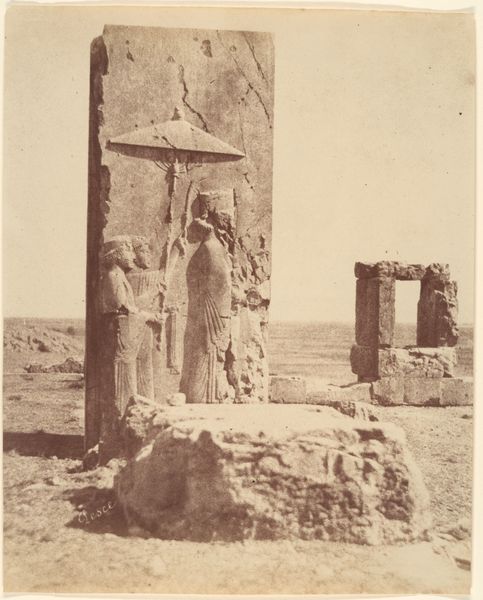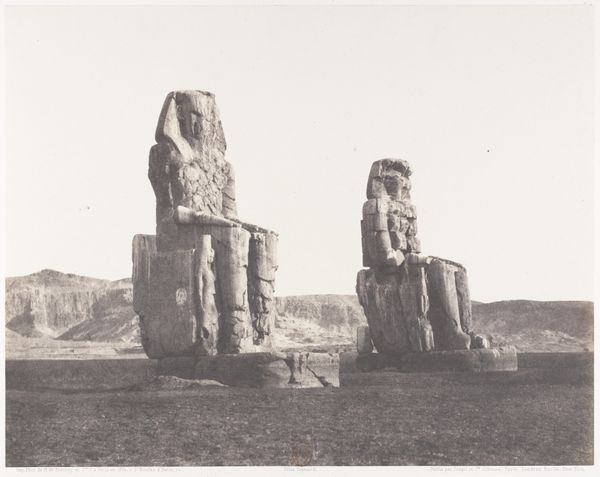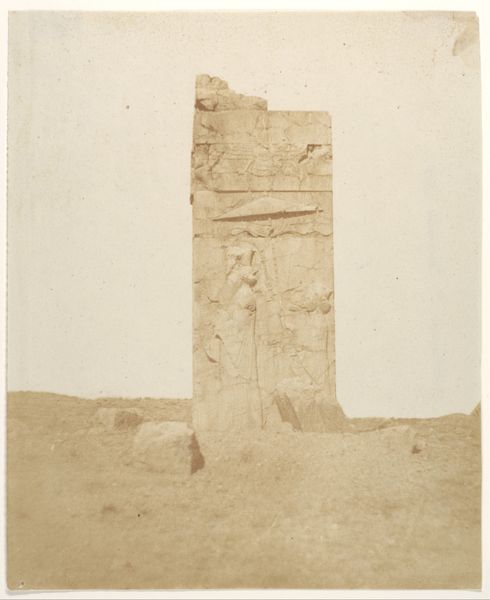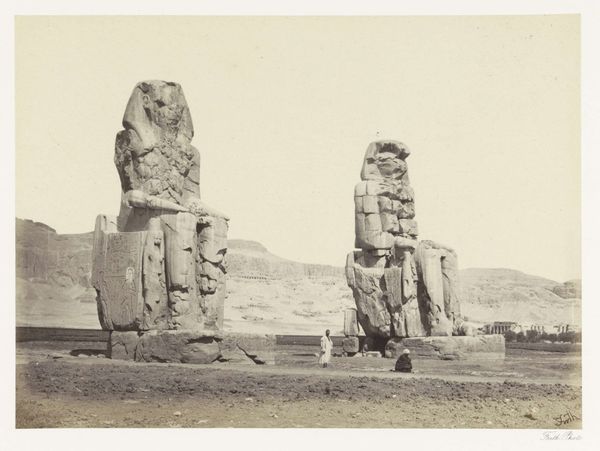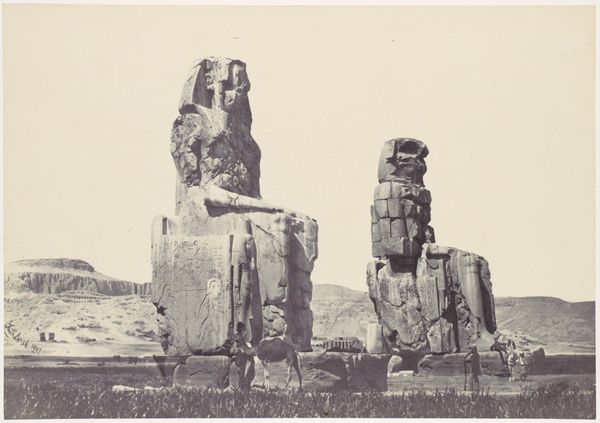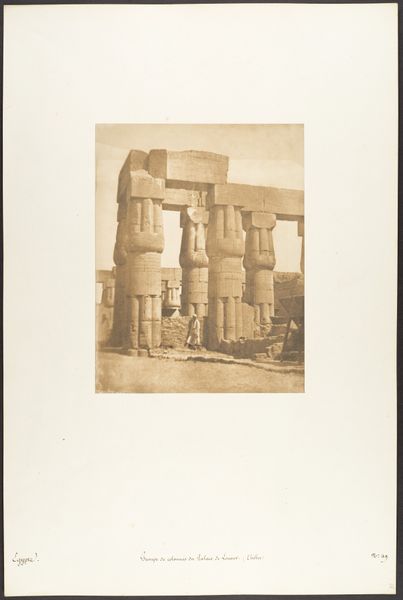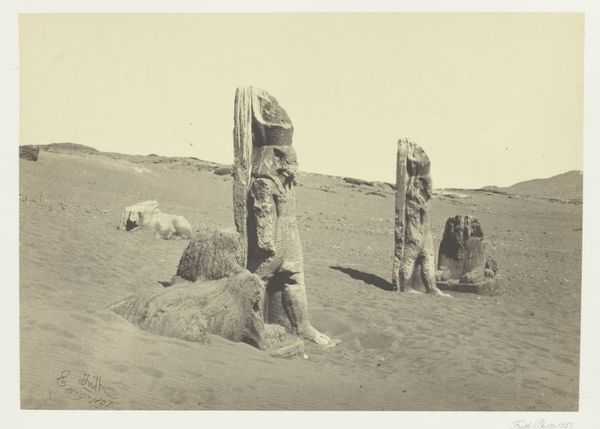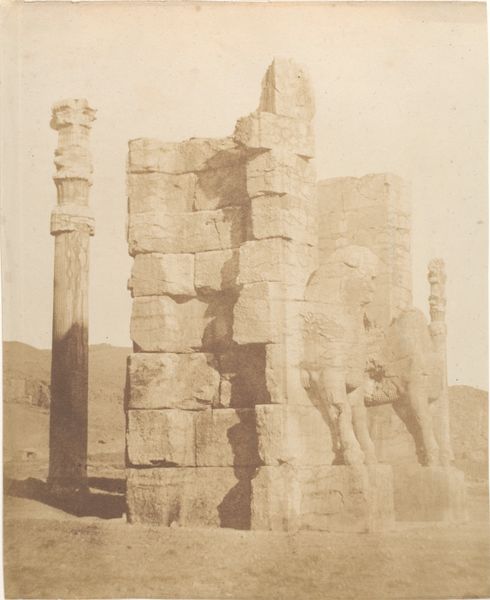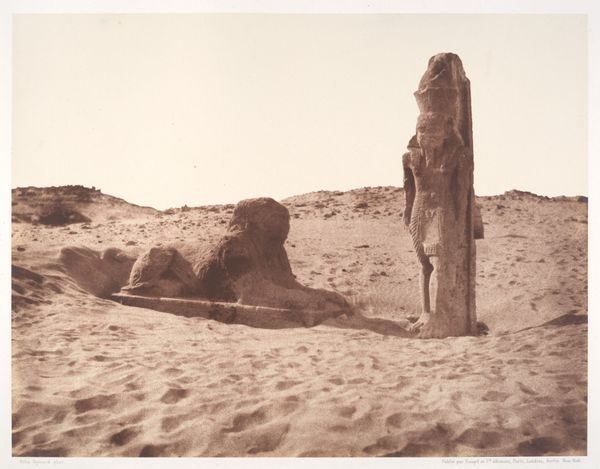
print, paper, photography
#
16_19th-century
# print
#
landscape
#
ancient-egyptian-art
#
paper
#
photography
#
egypt
#
ancient-mediterranean
Dimensions: 21.8 × 16.5 cm (image/paper); 43 × 29.9 cm (album page)
Copyright: Public Domain
Editor: We're looking at Maxime Du Camp's "Gournah, Statue de Memnon; Thèbes," possibly from the early 1850s. It’s a photograph, a print on paper. The starkness of the statue against the landscape gives it such a sense of isolation. What stands out to you about it? Curator: Well, what immediately grabs me is the socio-political context. This image isn't just a photograph; it's a record of early European exploration and documentation of ancient Egypt. The very act of photographing these monuments speaks to the power dynamics at play: the Western gaze appropriating and archiving Egyptian history. Consider how the print itself, as a reproducible medium, democratizes and disseminates this "discovery." Editor: So, the photograph becomes a tool? Curator: Precisely! It’s a tool of knowledge and power. How does the starkness, as you put it, reinforce or perhaps even challenge the authority of the photographed statue? The framing and focus directs how viewers at the time would have considered it. Editor: I see what you mean. It almost feels like an artifact being presented for scientific examination, stripping away any inherent spirituality. Curator: Exactly. And that raises questions about the role of the photographer. Was Du Camp simply an objective recorder, or an active participant in constructing a particular narrative about Egypt's past and its relationship to the modern world? Editor: I never thought about photography in that light, as something actively shaping cultural perception. Thanks for providing a wider lens! Curator: My pleasure! Thinking about art in the context of its production and reception can really open up new avenues for understanding.
Comments
No comments
Be the first to comment and join the conversation on the ultimate creative platform.
